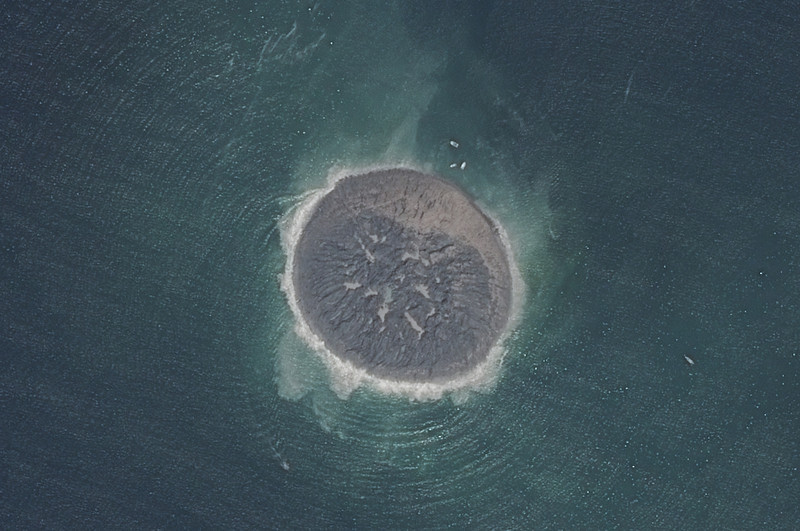(Associated Press) — Alongside the carnage of Pakistan’s massive earthquake came a new creation: a small island of mud, stone and bubbling gas pushed forth from the seabed. Experts say the island was formed by the massive movement of the earth during the 7.7-magnitude quake that hit Pakistan’s Baluchistan province on Tuesday, Sept. 24, 2013.
The island appeared off the coast of Gwadar, a port about 330 miles (533 kilometers) from Pakistan’s largest city of Karachi and 75 miles (120 kilometers) from Iran. Navy geologist Mohammed Danish told Pakistan’s Geo Television that a Pakistani Navy team visited the island Wednesday. He said the mass was about 60 feet (18 meters) high, 100 feet (30 meters) wide and 250 feet (76 meters) long, making it a little wider than a tennis court and slightly shorter than a football field.
Such land masses have appeared before off Pakistan’s Makran coast, said Muhammed Arshad, a hydrographer with the navy. After quakes in 1999 and 2010, new land masses rose up along a different part of the coast about 175 miles (282 kilometers) east of Gwadar, he said. Each of those disappeared back into the sea within a year during the stormy monsoon season that sweeps Pakistan every summer, he said.
The ideas for what caused this island to form vary, but the one that has gained the most support so far, it seems, is that it was a mud volcano — the earth of the ocean floor was loosened by the earthquake, which allowed a trapped deposit of methane gas to push up to the surface, carrying the mud and earth with it. These mud volcanoes are fairly common in Pakistan, with 80 active ones currently known to be in Balochistan province, where the earthquake occurred. Shortly after the island formed, local residents went out to explore it, recording this video. Towards the end of the video, you can see the methane gas burbling up through the surface of the island, and the people lighting the gas on fire:
This island hasn’t been named yet, but it’s likely not going to be around long enough to earn one. These mud volcano islands aren’t very stable, and this one will be eroded away by the ocean tides within a few years at most.



 October 1st, 2013
October 1st, 2013  Riffin
Riffin 



 Posted in
Posted in  Tags:
Tags: 